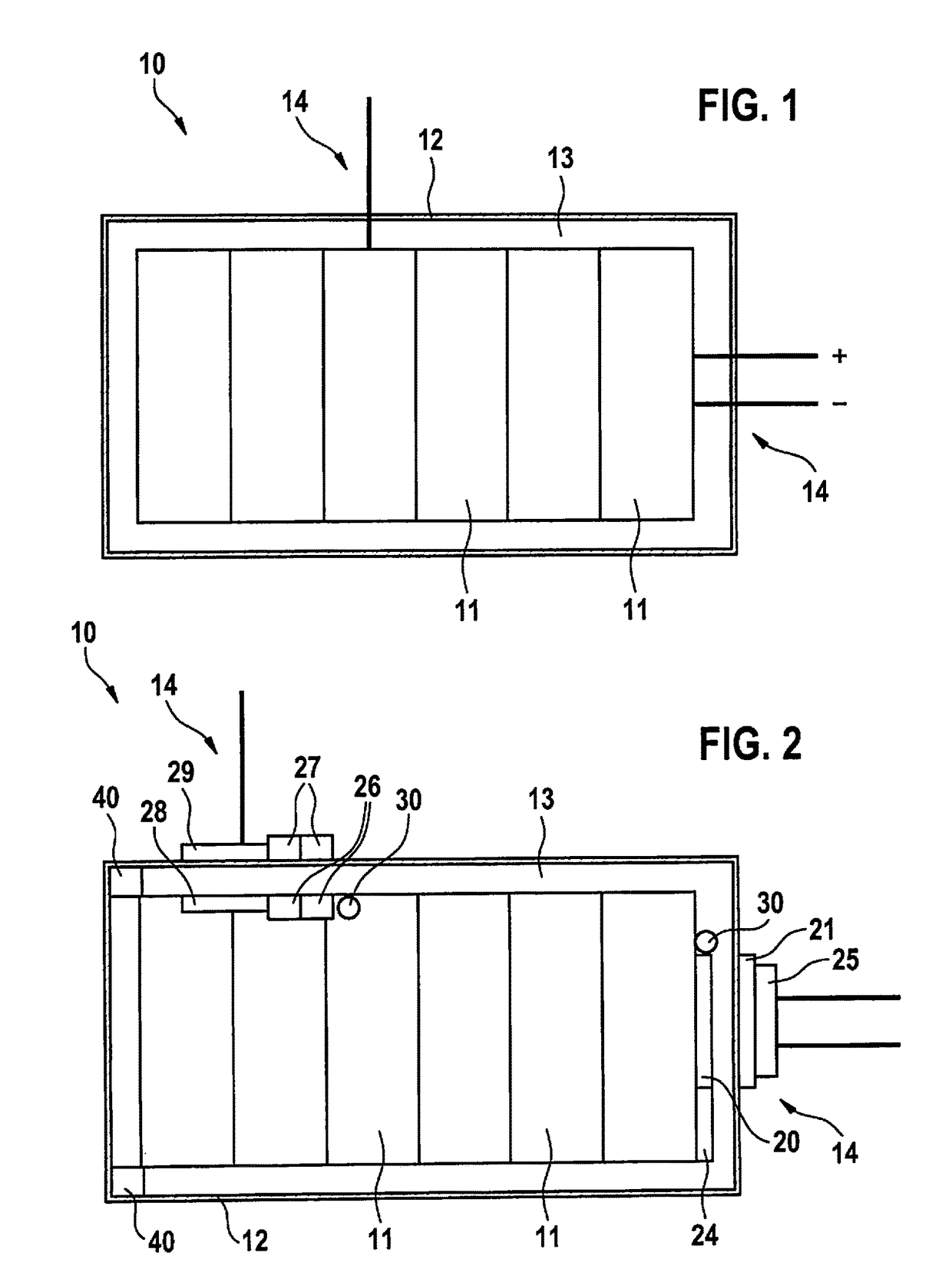Battery with thermal insulation
a battery and thermal insulation technology, applied in the field of batteries, can solve the problems of depleting the battery, wasting energy, and affecting the service life of the battery, so as to prevent the destruction prolong the battery life, and prolong the battery life. the effect of the battery or the external devi
- Summary
- Abstract
- Description
- Claims
- Application Information
AI Technical Summary
Benefits of technology
Problems solved by technology
Method used
Image
Examples
Embodiment Construction
[0024]FIG. 1 schematically shows a battery according to the existing art, having a multiplicity of battery modules 11, a battery housing 12, an insulating element 13, and two connecting elements 14. The connecting elements 14 are, on the one hand, a terminal for transmitting electrical energy between battery 10 and an external device. Connecting element 14 is realized in the form of cables that run from battery modules 11 through insulating element 13 and battery housing 14, and thus run out from the battery. Connecting element 14 for the transmission of data is made up of a cable that is also routed from battery modules 11 through thermal insulating element 13 and battery housing 12. Both in the case of connecting element 14 for the transmission of electrical energy and also in the case of connecting element 14 for the transmission of data, due to the cables that are present in each case there results a thermal loss due to the thermal conduction in the connecting cables. In the tra...
PUM
| Property | Measurement | Unit |
|---|---|---|
| electrical energy | aaaaa | aaaaa |
| transmission | aaaaa | aaaaa |
| energy | aaaaa | aaaaa |
Abstract
Description
Claims
Application Information
 Login to View More
Login to View More - R&D
- Intellectual Property
- Life Sciences
- Materials
- Tech Scout
- Unparalleled Data Quality
- Higher Quality Content
- 60% Fewer Hallucinations
Browse by: Latest US Patents, China's latest patents, Technical Efficacy Thesaurus, Application Domain, Technology Topic, Popular Technical Reports.
© 2025 PatSnap. All rights reserved.Legal|Privacy policy|Modern Slavery Act Transparency Statement|Sitemap|About US| Contact US: help@patsnap.com


